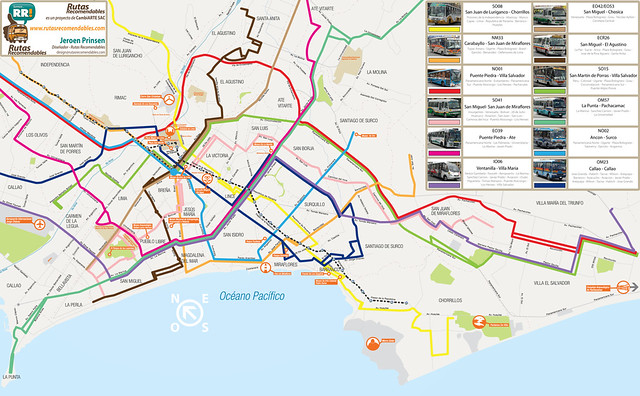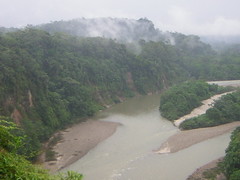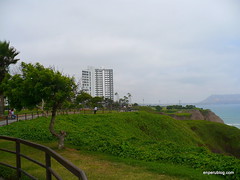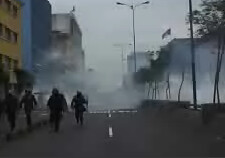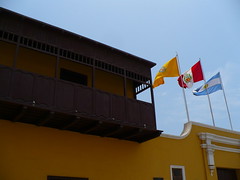Recommended routes – Lima combi travel made ridiculously easy
By Stuart Starrs
 I first spoke to Jeroen Prinsen in early 2010. I had been following his updates on Twitter and was intrigued. The Dutchman seemed to have been visiting dozens of far flung Lima districts over the course of the previous weeks and had even visited Ancón on the same day I did. The thing that interested me most though, was that Ancón and all these other places didn’t appear to be the main focus of his trips. Jeroen confirmed he was only briefly in Ancón – the end of the line for a number of Lima’s bus route – before getting back on the bus and heading home.
I first spoke to Jeroen Prinsen in early 2010. I had been following his updates on Twitter and was intrigued. The Dutchman seemed to have been visiting dozens of far flung Lima districts over the course of the previous weeks and had even visited Ancón on the same day I did. The thing that interested me most though, was that Ancón and all these other places didn’t appear to be the main focus of his trips. Jeroen confirmed he was only briefly in Ancón – the end of the line for a number of Lima’s bus route – before getting back on the bus and heading home.
I had to find out what was going on. Lima’s often cramped and uncomfortable combis – minivans used as buses – couldn’t possibly be that interesting, could they?
I had to ask, and Jeroen pointed me to one of his blog posts.
One of the projects I am working on at the moment is to produce a “tube map” of Lima. The London tube map is a world famous example of a transportation map and it is being used by millions. For Lima such a map currently doesn’t exist. And frankly it would be quite useful, because unlike London with its 12 tube lines, Lima has about 500 combi routes.
So a while ago the idea was born to create a network map for all these routes or at a minimum of a subsection of useful routes. The investigation started and it turns out that all these routes are indeed documented. So I managed to obtain the information for the 500-odd routes which are authorized by the Lima municipality (there are also illegal combis running other routes, but they are out of scope). The next step was to obtain detailed maps of Lima, which I also managed to get my hands on.

And the ultimate aim? Well he wouldn’t really say. He did promise to let me know the moment has was done. A promise that last week he kept.
Jeroen has launched Rutas Recomendables, an effort to make life easier for foreigners and locals alike in Lima’s chaotic public transport system. Having personally taken many a combi route from start to finish, he came up with a map that meets two requirements: one, routes that are clean, comfortable and safe, and two, routes that will take you to Lima’s most important sites.
I have settled for trying to select those combis which give the impression of having the newest fleet (on average) and appearing the most organized. Admittedly this is a bit of a subjective criterion (well, 100% subjective actually), but I have already found some gems. If you want an idea of what a “good” combi company looks like, take a look at the website of Consorcio Via. This work basically meant going into the city and observing the flow of public transport in various strategically located crossroads. One lovely sunday for example I spend in awe and what I baptised Lima’s paradise of combis: Plaza Bolognesi.
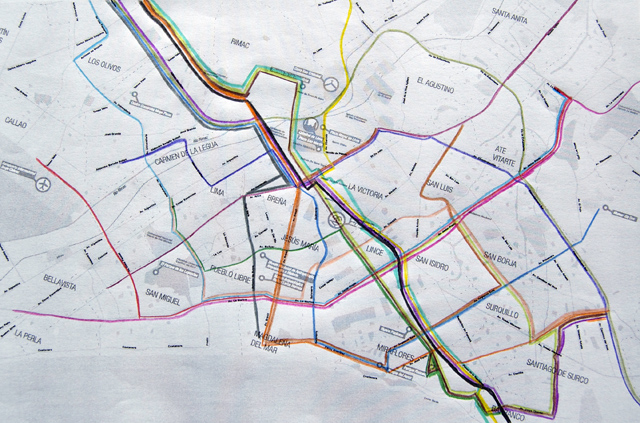
First draft
Anyway, the result of all this work is that I have selected 33 combi routes, which together cover 20 lines (there are duplications, as some of the lines have been contracted out to several companies. For example the route Javier Prado-La Marina is covered by about 60 different companies). Based on the information that I got from the municipalities, I know exactly the routes of these lines. Stories about the routes changing day by day are hugely overblown, this is not actually the case, at least not in the more central areas of Lima (notwithstanding the occasional blocked road due to reconstruction).
The high-res map is on sale at Rutas Recomendables for $5 US, and it shouldn’t be long before a printed version is available.
“The print go-live will be soon, hopefully in two weeks time”, he tells me, “just finishing up loose ends”.


